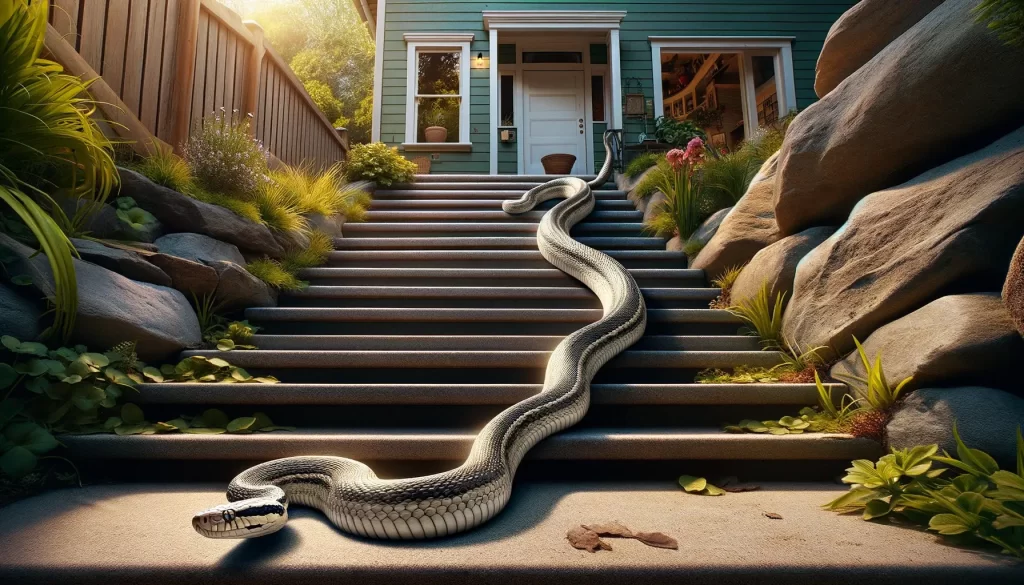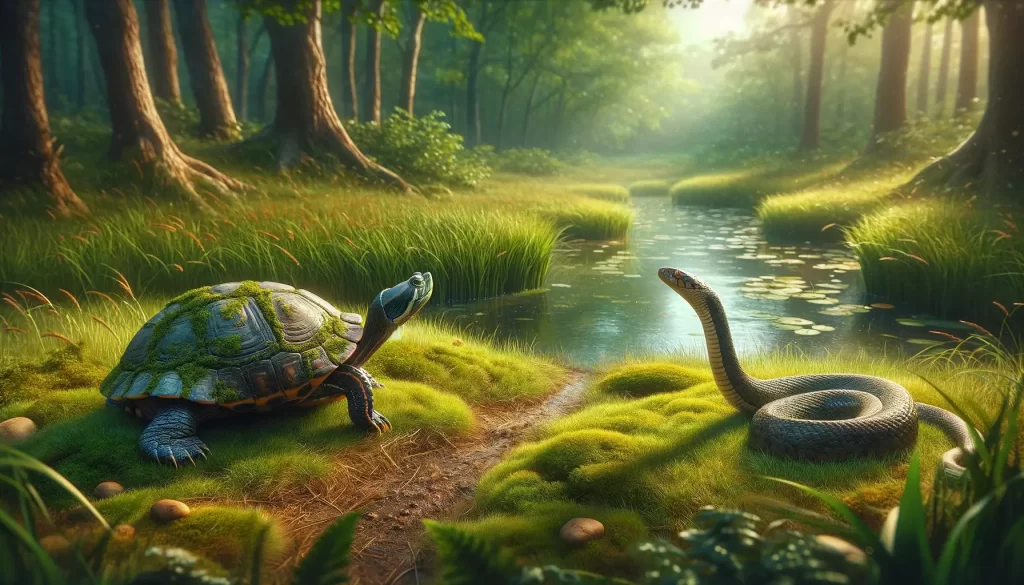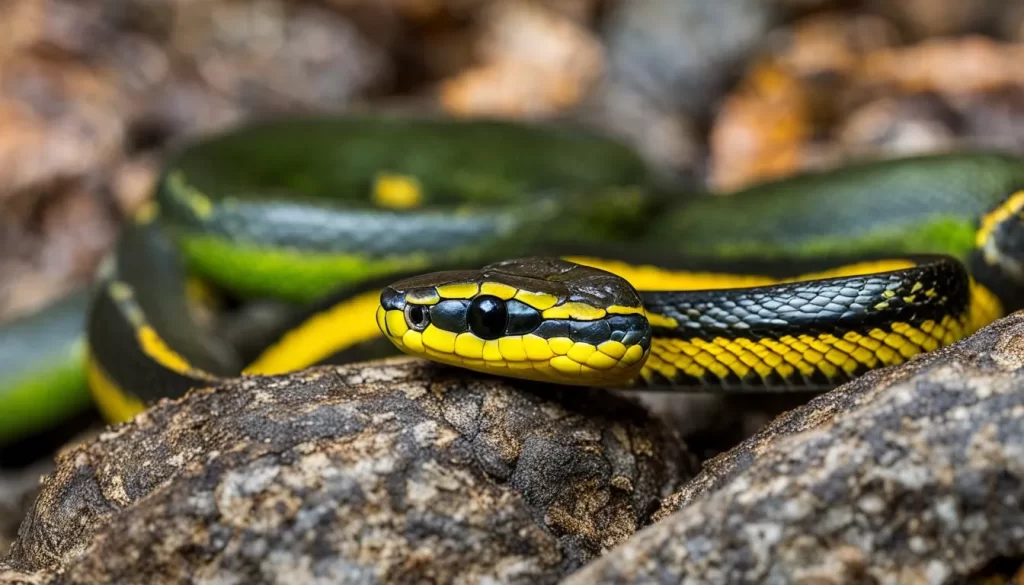
Washington State is home to a diverse range of snake species, including the common garter snake, terrestrial garter snake, valley garter snake, Western rattlesnake, Puget Sound garter snake, Northwestern garter snake, North American racer, ring-necked snake, and Northern rubber boa. The Western rattlesnake is the only venomous snake in Washington State.
Whether you are a nature enthusiast or simply curious about the native snakes in this region, this guide will provide you with valuable insights into the snake species found in Washington State.
From venomous to non-venomous snakes, we will explore their habitats, unique characteristics, and identification tips, allowing you to appreciate and coexist with these incredible creatures.
Key Takeaways:
- Washington State is home to a diverse range of snake species.
- The Western rattlesnake is the only venomous snake in Washington State.
- Common snakes in Washington State include the common garter snake and the terrestrial garter snake.
- Identifying snakes can be challenging, but paying attention to size, coloration, and patterns can help.
- Conserving and coexisting with snakes is essential for maintaining a balanced ecosystem.
Common Snakes in Washington State
When it comes to the common snakes found in Washington State, the one you’re likely to come across the most is the common garter snake.
These snakes are widely distributed throughout the region and can be found in various habitats, including coastal and mountain forests, sagebrush deserts, and wet meadows.
They’re often found near water sources, making them quite common near rivers, streams, and lakes.
This adaptable and non-venomous snake is known for its distinctive coloration, usually featuring a combination of green, brown, and yellow scales.
Another snake species that you may encounter in Washington State is the terrestrial garter snake.
These snakes can be found in a range of environments, including grasslands, forests, and even mountainous areas.
They are excellent climbers and can often be seen basking in the sun on rocks or fallen logs. The terrestrial garter snake is also non-venomous and is known for its slender body and vibrant color patterns.
Aside from the garter snakes, there are several other common snake species in Washington State.
These include the valley garter snake, Western rattlesnake, Puget Sound garter snake, Northwestern garter snake, North American racer, ring-necked snake, and Northern rubber boa.
Each of these snakes has its own unique characteristics and can be found in different habitats across the state.
Venomous Snakes in Washington State
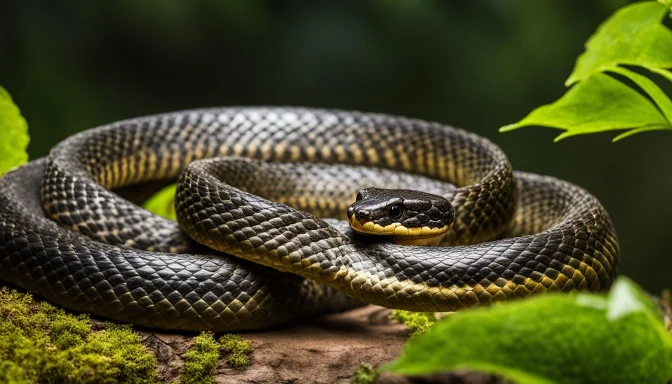
When it comes to venomous snakes in Washington State, the Western rattlesnake takes center stage.
This species can be found in a variety of habitats, including mountainous areas, woodlands, and grasslands.
While Western rattlesnakes generally avoid human contact, it’s important to exercise caution if you happen to encounter one.
Western rattlesnakes have unique coloration and patterns that make them easily distinguishable.
Their triangular head and distinct color variations set them apart from non-venomous snakes. If you come across a snake in Washington State and suspect it might be a Western rattlesnake, it’s essential to understand the differences in appearance and behavior between venomous and non-venomous species.
Being able to identify venomous snakes from non-venomous ones is crucial for safety purposes.
By recognizing and respecting the presence of venomous snakes, you can help prevent any unnecessary and potentially harmful encounters.
Non-venomous Snakes in Washington State
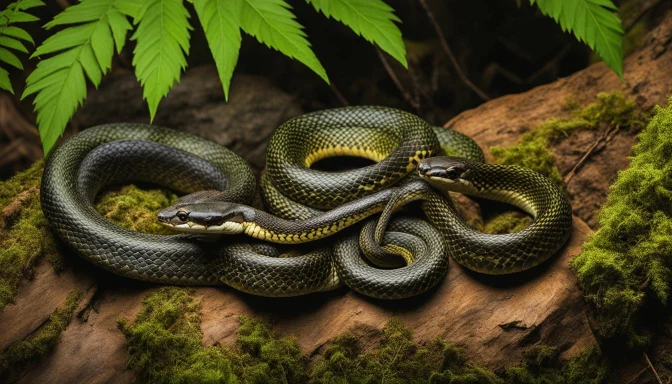
Washington State is home to a diverse range of snakes, most of which are non-venomous. These fascinating creatures play an important role in the ecosystem, and while they may not possess venomous bites, it’s crucial to treat them with respect and observe them from a distance.
- Common Garter Snake
- Valley Garter Snake
- Puget Sound Garter Snake
- Northwestern Garter Snake
- North American Racer
- Ring-necked Snake
- Northern Rubber Boa
- California Mountain Kingsnake
These snakes thrive in various habitats across the state and contribute to the delicate balance of the ecosystem.
While they may be non-venomous, it’s important to value their role in nature and maintain a safe distance when encountering them.
Snake Identification Tips
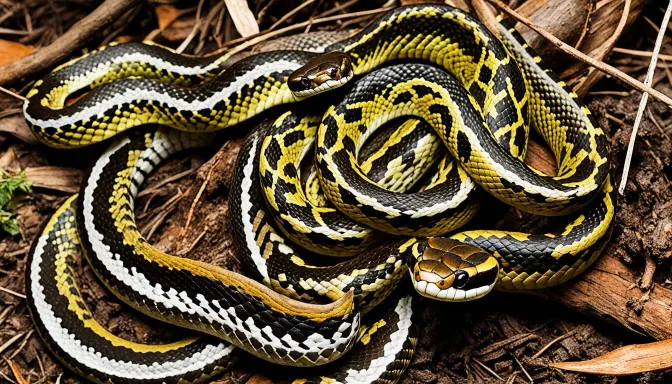
Identifying snakes in Washington State can sometimes be challenging due to the variability in coloration and patterns within species. However, there are some key characteristics to look out for.
When trying to identify a terrestrial garter snake, pay attention to its constricting behavior, which is a unique feature.
The valley garter snake, on the other hand, can be identified by its pronounced red bars between its yellow stripes.
To identify the Western rattlesnake, look for its triangular head and distinct color variations. This venomous snake can be easily recognized using these characteristics.
Additionally, paying attention to details such as size, coloration, and patterns can greatly aid in snake identification.
Remember to always observe snakes from a safe distance and avoid approaching or disturbing them. It’s important to prioritize your safety and the well-being of the snakes.
Snakes of Washington State Habitats
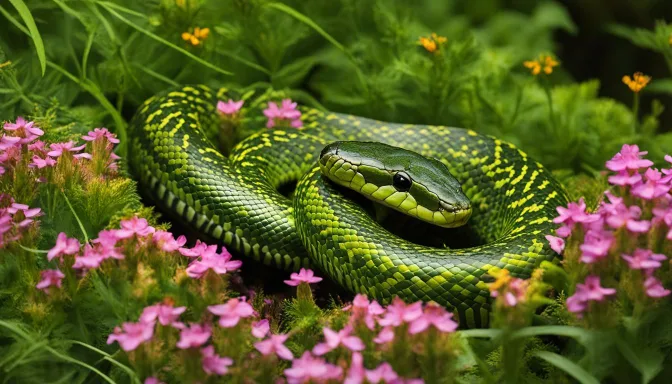
The snakes in Washington State have adapted to various habitats, showcasing their incredible versatility and ability to thrive in different environments.
Let’s explore some of the native snake species found in Washington State and the habitats they call home.
Common Garter Snake
The common garter snake (Thamnophis sirtalis) is a familiar sight in Washington State. This adaptable snake can be found in a variety of habitats, including coastal and mountain forests, as well as sagebrush deserts.
With its long, slender body and distinctive striped appearance, the common garter snake is well-suited to diverse landscapes.
Terrestrial Garter Snake
Another snake species that thrives in Washington State is the terrestrial garter snake (Thamnophis elegans).
These snakes can be found in grasslands, forests, and even mountainous areas. They are excellent climbers and are often observed basking in the sun on rocky outcrops or fallen logs.
Valley Garter Snake
The valley garter snake (Thamnophis sirtalis fitchi) is well adapted to urban areas in Washington State.
Despite human development, these snakes have managed to find a home in parks, gardens, and green spaces within the city limits.
Their ability to coexist with human settlements is a testament to their resilience and resourcefulness.
Western Rattlesnake
One of the more fascinating snake species found in Washington State is the Western rattlesnake (Crotalus oreganus).
These venomous snakes can be found in woodlands and grasslands, often in close proximity to human settlements.
It is important to exercise caution and respect their space when encountering a Western rattlesnake.
The diverse habitats of Washington State provide a rich tapestry for these native snake species to thrive.
From forests to deserts, and urban areas to remote wilderness, each habitat offers unique advantages and challenges that these snakes have adapted to over time.
By understanding the habitats in which these snakes reside, we can gain insights into their behavior, preferences, and the important role they play in maintaining the delicate balance of the ecosystem.
Conservation and Coexistence with Snakes
Snakes play an essential role in the ecosystem, and it is crucial to conserve and coexist with them. Avoiding unnecessary harm or killing of snakes is important, as they provide valuable ecological services as efficient predators.
By observing snakes from a respectful distance and not attempting to capture or keep them as pets, we can promote their well-being and maintain a balance in nature.
Educating ourselves and others about the importance of snakes and their conservation is vital for their long-term survival.
Conclusion
Washington State is known for its diverse snake population, which includes both venomous and non-venomous species.
It is essential to familiarize ourselves with these snakes, their habitats, and distinguishing characteristics to promote coexistence and minimize potential risks.
By understanding snake identification and respecting their role in the ecosystem, we can contribute to the preservation of Washington State’s native snake species.
When encountering snakes, it is important to observe them from a distance and avoid unnecessary confrontation.
By maintaining a respectful distance, we not only reduce the risk of snake bites but also allow snakes to continue their important ecological role as natural predators.
Remember, venomous snakes like the Western rattlesnake may be present in certain areas, so it is crucial to exercise caution and seek professional assistance if they pose a threat.
Conservation efforts are vital to ensure the long-term survival of Washington State’s snake species.
By appreciating and conserving these fascinating creatures, we can contribute to the overall biodiversity and natural balance of the state.
Let us continue to respect and preserve the habitats of Washington State’s native snakes, appreciating their unique traits and the important role they play in our environment.
Frequently Asked Questions
Q: Are there any poisonous snakes in Washington state?
A: Yes, Washington state is home to one venomous snake species, the Western Rattlesnake (Crotalus oreganus). They are typically found in arid regions and are rarely encountered in the western, more populated areas of the state.
Q: Does Washington have diamondback rattlesnakes?
A: No, Washington state does not have Diamondback Rattlesnakes. The only venomous snake found in Washington is the Western Rattlesnake (Crotalus oreganus).
Q: What type of rattlesnakes are in Washington state?
A: The only type of rattlesnake in Washington state is the Western Rattlesnake (Crotalus oreganus). They are found in the eastern and central parts of the state, particularly in rocky and arid regions.
Q: Can you hunt snakes in Washington state?
A: Washington state law prohibits the hunting of snakes. It is illegal to collect or kill snakes, including venomous ones, without a specific permit. This law is in place to protect local wildlife and biodiversity.
Q: Are snakes a problem in Washington state?
A: Snakes are not typically a problem in Washington state. Most snake species in the region are non-venomous and avoid human contact. Encounters with the venomous Western Rattlesnake are rare and occur mostly in their natural habitats.
Q: What is the most common snake in Washington state?
A: The most common snake in Washington state is the Garter Snake. Species like the Common Garter Snake (Thamnophis sirtalis) and the Northwestern Garter Snake (Thamnophis ordinoides) are widespread and often seen in gardens and near water bodies.
Q: What snakes are there in Western Washington?
A: In Western Washington, the most commonly encountered snakes are Garter Snakes, including the Common Garter Snake and the Northwestern Garter Snake. These areas are generally too wet and cool for the venomous Western Rattlesnake.


